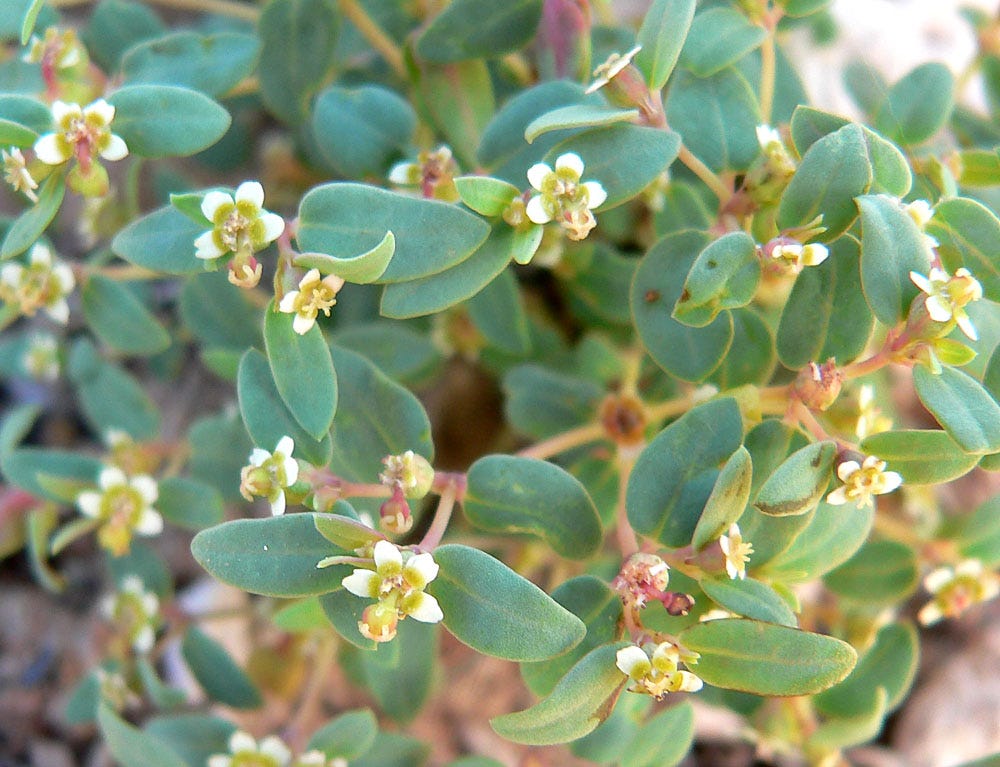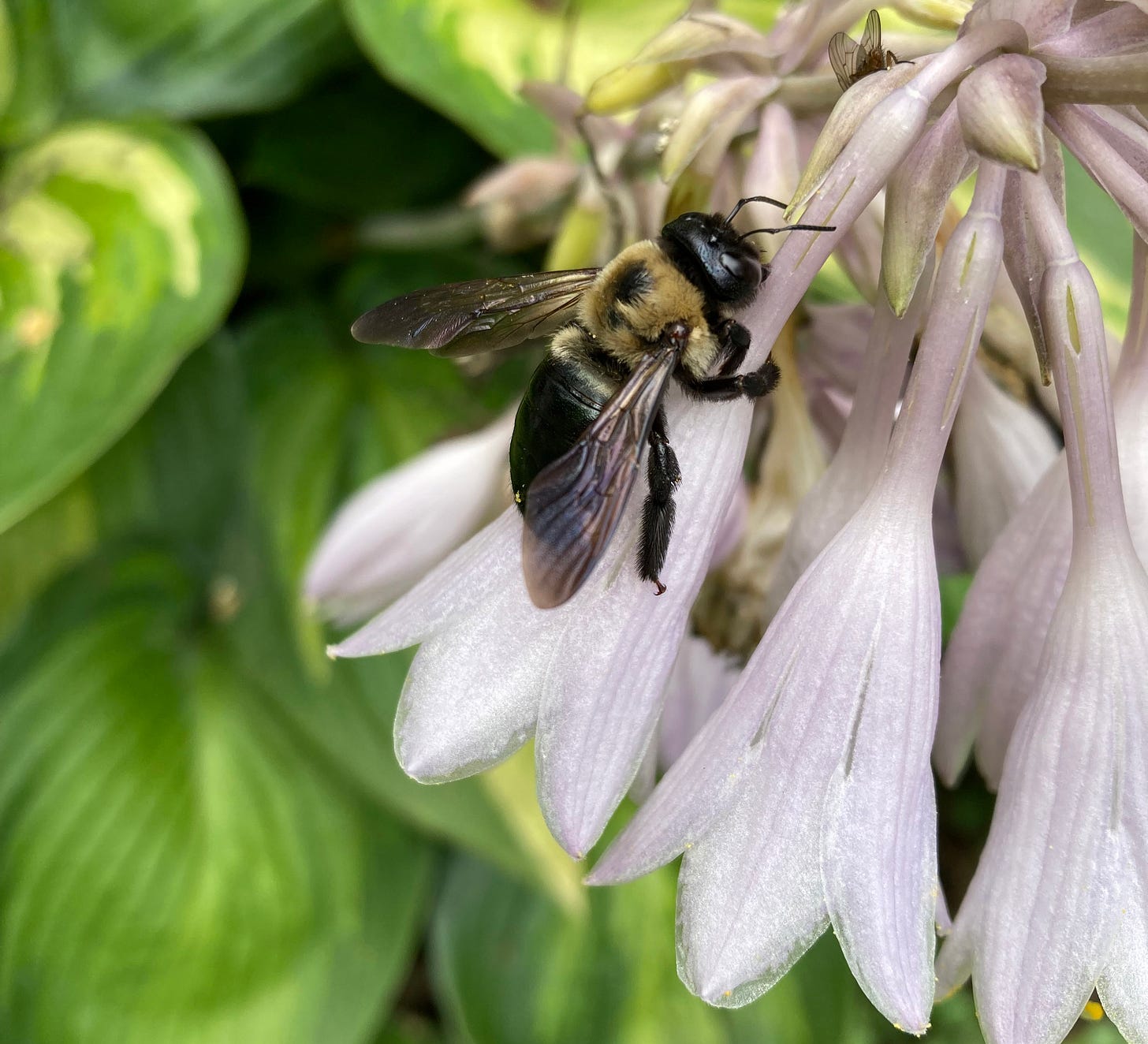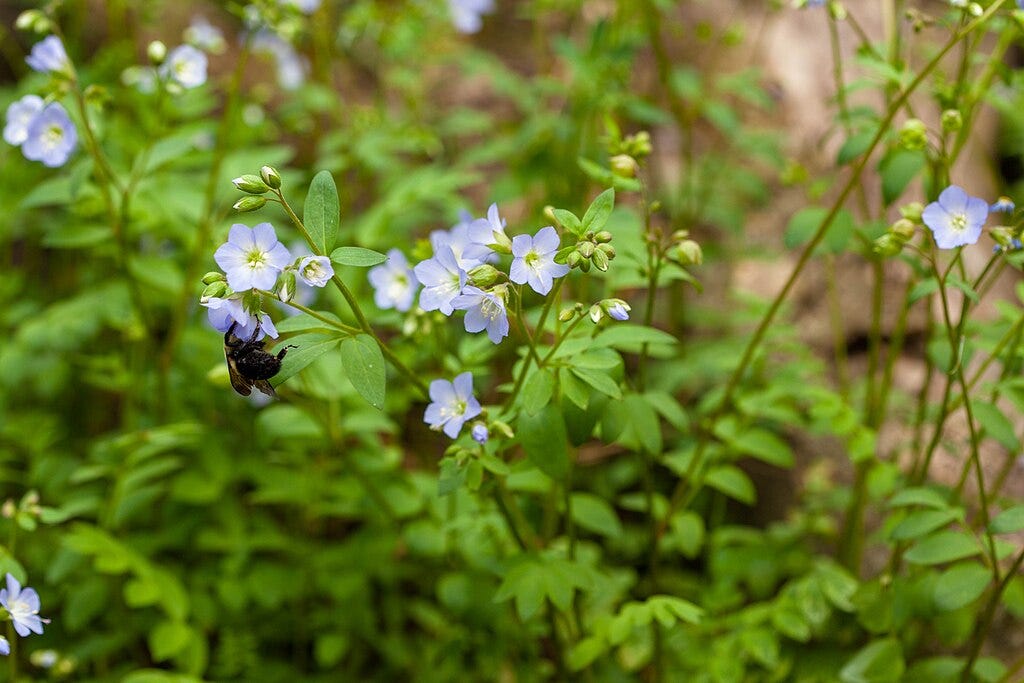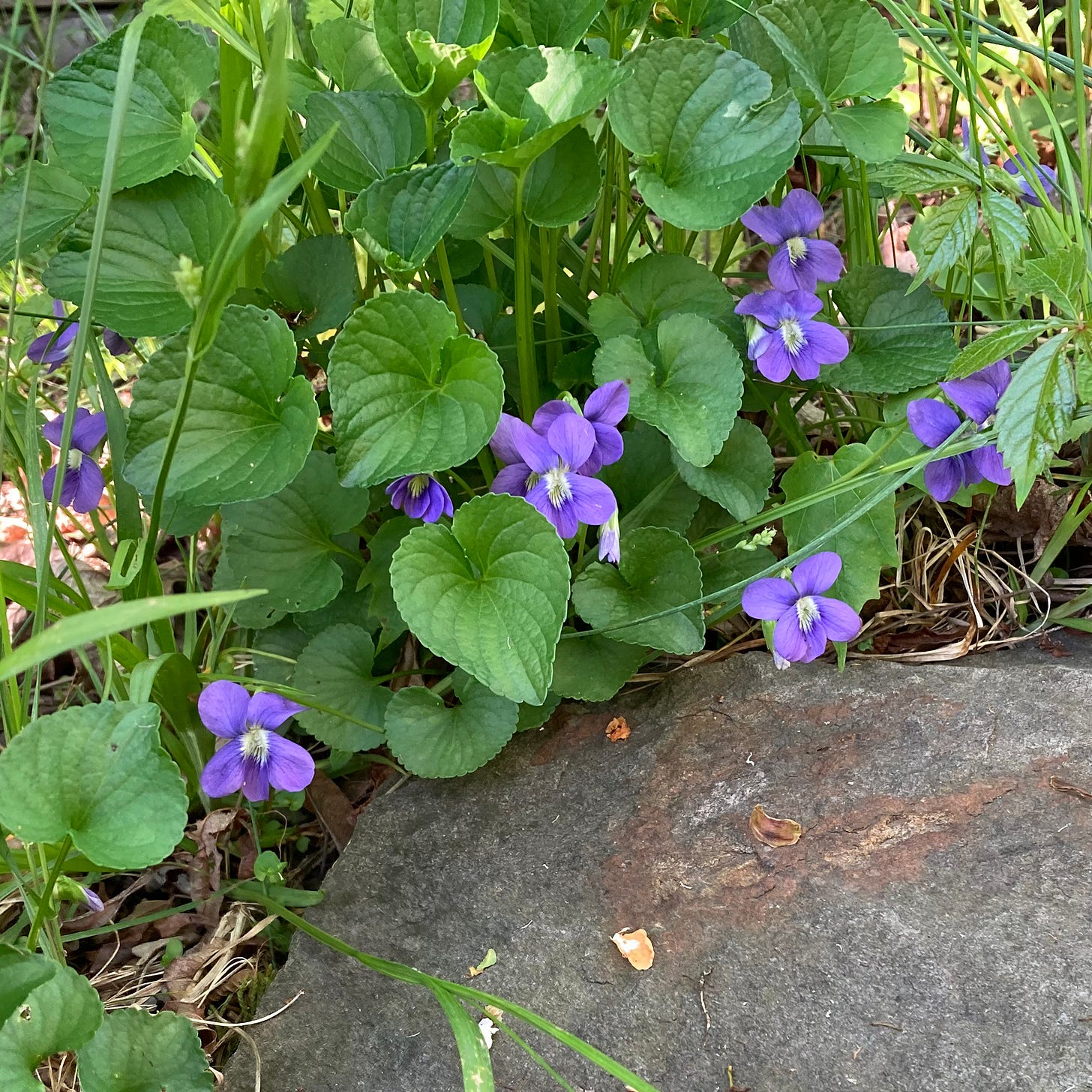As a cold, gray winter nears its end, gardeners are hungry for the first blooms of spring. The queen bees who will soon be emerging from their nests will also be hungry. Some 4,000 different species of bees are native in the US. They come in a surprising number of shapes and sizes.

The smallest known bee anywhere in the world, Perdita minima, is less than two millimeters long (smaller than the width of the yarn in the sweater I’m wearing). It’s native to the desert southwest, where it feeds on similarly tiny wildflowers in the Spurge family (Euphorbia spp.).

Queen bumblebees (Bombus spp.), charmingly fuzzy and larger than the drones and workers, are among our biggest bees. The very biggest bee is probably the carpenter bee (Xylocopa spp.), too big to enter most flowers, so it cuts a slit in the side and sneaks nectar out that way.

Our native wildflowers don’t bloom quite as early as some of our best-known exotic flowers, like the crocuses native in the mountainous parts of Europe and the reticulated irises native to the Middle East, from Turkey to Iran. While I’m not about to purge these flowers from my garden in the NY Hudson Valley, they do nothing to help our native bees—the bee I photographed in one of my crocus flowers last March was a honeybee (Apis mellifera) which is itself native to Europe, not the US.
We do, however, have many native wildflowers that bloom almost as early and welcome native bees. This might be a good time to mention that our native bees, unlike honeybees and other non-natives, are not aggressive. Most native bees are solitary and do not have hives to defend, so they have no reason to sting except in extreme cases. (For example, if you blunder around barefoot in the garden and step on one—don’t ask how I know.)

This spring I plan to add a lot of early-spring-blooming natives to my garden. I already have common blue violets (Viola sororia), and a few of the bicolor form of these violets (Viola sororia f. priceana). A plant in my vegetable garden reseeds itself every year, and I’ve been moving its offspring to places where I’d love to have an abundance.
Keep reading with a 7-day free trial
Subscribe to The Generous Garden to keep reading this post and get 7 days of free access to the full post archives.






